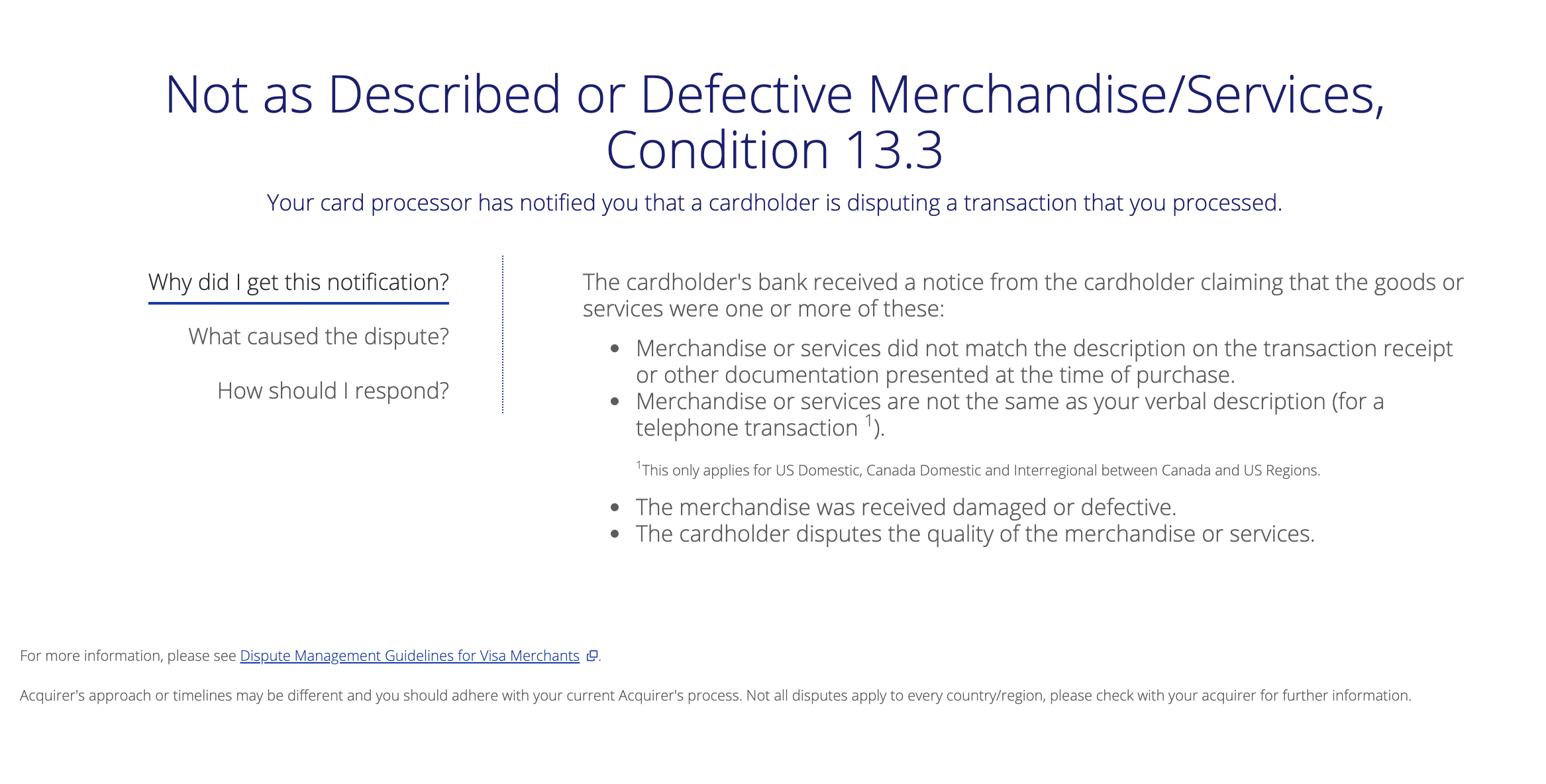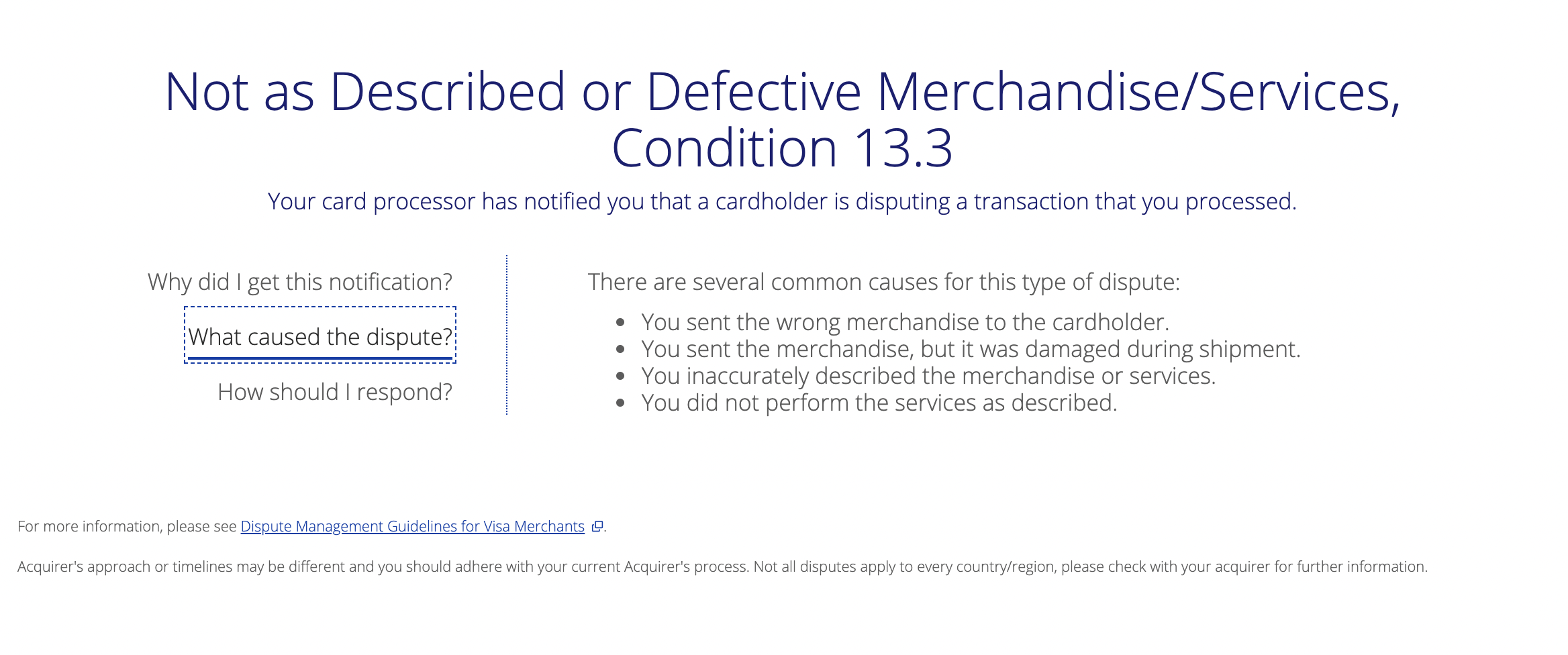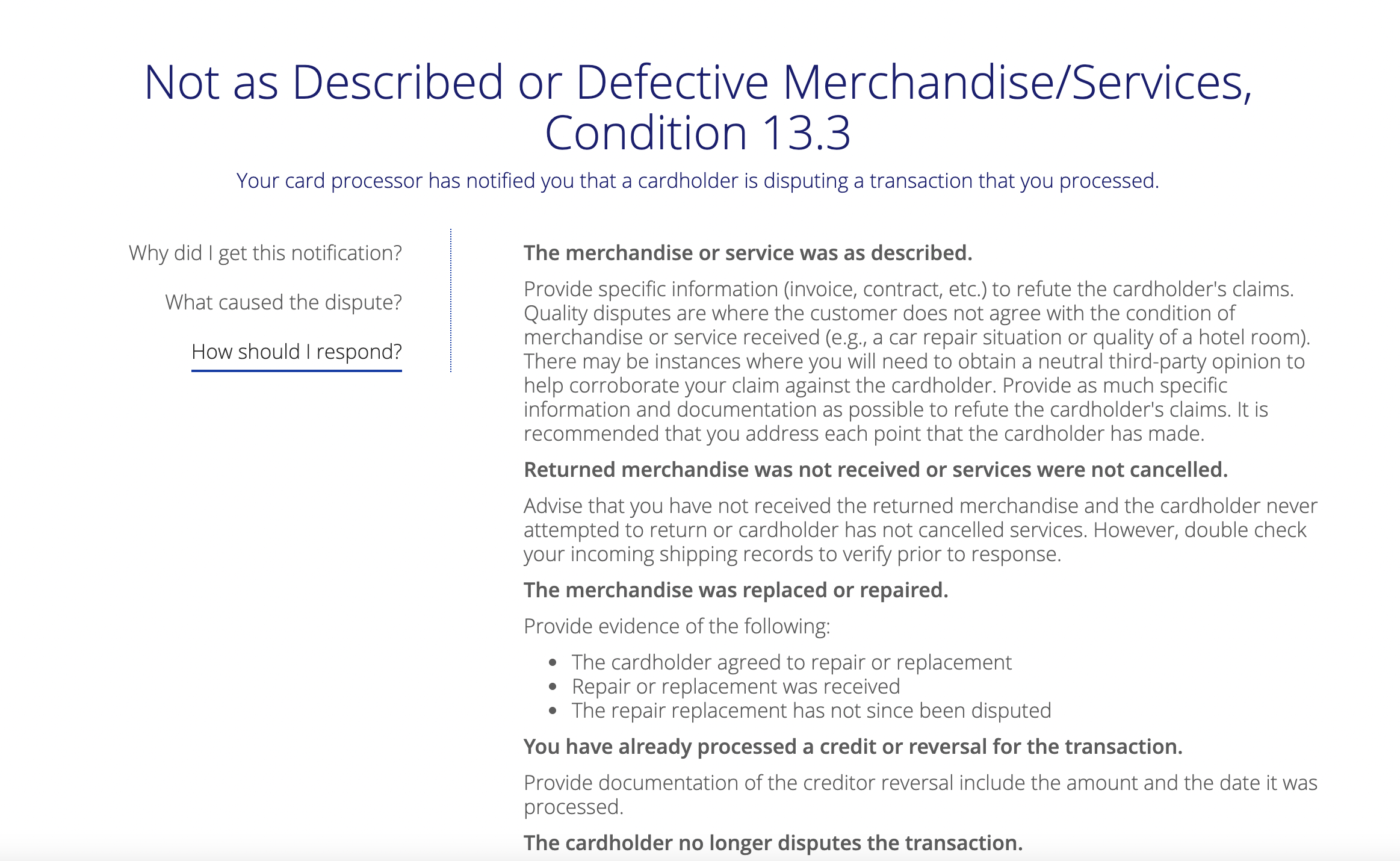Few things are worse than a high chargeback rate on your account. One of those is not knowing how to decrease your business’s chances of chargebacks. Why is this important for merchants?
Chargebacks are disputes against businesses. They happen when fraud, technicalities, and other errors result in negative customer experiences. Sometimes, merchants may process invalid transactions. These could be due to a lack of technological organization or weak authorizations.
Other times, clients file disputes when the merchant is not at fault. When fraud, and friendly fraud, are not resolved, they will come back as chargebacks.
The Visa Claims Resolution Update in 2018 has sped up the dispute process. Now, chargebacks can hit merchant accounts at a faster rate. Merchants become at risk for account closures. Fighting chargebacks is not more important than ever for eCommerce businesses.
Reduce Chargebacks Through These Methods
The long list of chargeback codes sits on your desk, the numbers glaring up at you. You pick up the note and scan the page. What? You think, Again? What are we doing wrong?
Chances are, you already have an adequate and efficient customer service team. Or, you’ve recently implemented the best fraud protection program to hold back these chargebacks. You think that you’re doing all you can to lower your chargeback rate.
It’s also likely that you have heaps of things to do on your plate—every single day. The thought of taking on one more urgency makes your heart sink.
We understand that you’re busy and need to focus on growing your company. Our list of quick methods can guide you through your chargeback problem. Additionally, Revitpay’s professionals can take a few of those issues off your plate.
Are Your Security Measures Secure Enough?
As millions of merchants move their businesses online, so are criminals. This increase means that security technologies are ramping up to protect eCommerce and consumers. It’s up to you as a merchant to keep your security measures updated.
Fraud Prevention via Payment Gateways: Gateway processors screen each transaction for fraud. Revitpay’s payment gateway processor brings complimentary fraud protection to our merchants. This feature includes the ability to customize address verification services and CVV2 security code responses.
3D Secure: A payment authentication tool that uses codes and passwords for transactions. Visa and Mastercard offer this service when corresponding cardholders are purchasing. Merchants can implement 3D Secure for alternative cardholders through registration.
Interchange Optimization: Interchange is what you pay when your customers use credit cards. Banks lower these fees for merchants who collect extra client information. This incentive prompts merchants to send more data so that they can prevent fraud.
Proof of Delivery: Choose a shipping service that will confirm deliveries. Depending on your product, you may want a service that will provide photo proof. Additionally, requesting signage from the customer can protect you against friendly fraud.
Clear Communication Keeps Clients from Disputing
Have you ever dealt with trigger-happy customers? The ones that go straight to the bank when something is wrong with their purchase?
You want your customers to go to you before they file a dispute. Their problem is likely something you can resolve.
However, customers who are not clear about where to contact your team will spell out trouble for you. Where somebody could find your company’s contact information may seem obvious to you. Yet, clients experiencing hiccups with their order may give up if they don’t see it right away.
Not only should touching base with your team be seamless, but there also needs to be all-around clarity.
Contact Information: List your business’s customer service phone number and email clearly or make it easy for website visitors to access the contact page.
Billing Descriptor: Your clients need to be able to recognize the product or service your business charged them for. Billing descriptors on card statements usually feature a merchant’s “Doing Business As” name. If your DBA is not the name customers will recognize, they may think they have been fraudulently charged. Additionally, the issuing bank may flag an unrecognizable billing descriptor as fraud.
Descriptions and Merchandise: See if your product or services descriptions could use a makeover. The photos you use to represent your merchandise can win or lose a client. Missing details can be a determining factor for a buyer. Descriptive and transparent representations of your products can set the right expectations. Clients who feel misled by a product or service may dispute.
Return Policy: Your return policy should be simple to understand. If you don’t accept most returns, you can let customers know before, during, and after checkout. You can attach your policy to confirmation emails. Or, you can opt for customers to confirm that they have read the return policy at checkout.
Accurate Delivery Estimates: Ensure that the delivery estimates you post are as precise as possible. Additionally, offer multiple shipping options for your clients to choose from.
Notifications: Notifying your customers that shipping or deliveries are experiencing delays is good practice. Keep in close contact with your shipping services to track your deliveries.
Self-Service FAQ: Simple issues such as locating a feature or clarifying confusions can be accessed on a FAQ page. Allow customers to use easy self-service but also make it equally seamless to contact a customer representative.
Automatic Fraud Detection: Issuing banks may use automation to detect fraud and dispute them so that they won’t go unnoticed by the client. If this keeps happening, look into if there’s anything about your descriptor that is causing the trigger.
Responsive Measures
Around-the-clock customer service would be the most ideal. If that is possible for your business, especially if you have international clients, it could create a massive difference in user experience. It’s understandably easy to think that a small customer service team can handle clients. However, training a handful of high-quality and prompt workers to resolve issues is an excellent return on investment.
Refunds: Send them promptly and communicate with the client when they can expect their funds to be returned.
Email and Phone: Clients appreciate talking to a human instead of a bot. A self-service phone system can work for simple issues. But make it possible to get in touch with a live person immediately. Additionally, prompt email responses can make the clients feel heard and cared for. You can note how long until the client can expect an answer, for example, 1-3 business days.
Customer Vault: Keep a simple system that will house all of your clients’ information. You can then write notes about any issues they face so that representatives can readily assist customers.
Reviews: Take the time to respond to reviews. Some negative reviews can be caused by misunderstandings on the side of the client. Moreover, you can see where your customer service can use improvement.
Social Media: Clients can use social media to leave reviews on your post or ask questions. A social media manager can address issues through DMs and comments.
Efficient Technology
Website Navigation: Work with your web developer to keep your website uncluttered and straightforward to navigate. A glitchy storefront can discourage customers from contacting you or finding information on your site. Ensure that the desktop and mobile versions respond well to your content.
Loading Speed: Technicalities like JavaScript issues and ad overload can slow down your website. You can use load speed tests to see how your website responds from various locations. It can also show you any error pages that exist. Periodically checking up on your load speed can reduce customer dissatisfaction.
Coordinated Payment Processing: Use a payment processor that is organized and experienced. They can assist you in issues you come across regarding your transactions and website compliance.
Due Diligence
Chargeback Analytics: Check data for which products receive the most chargebacks. Ask for or check reviews for clues. The merchandise may just be a risky one. You can also find data on which locations produced the density of chargebacks.
Compliance: Advertising best practices, card brand regulations, and other compliance need to be up to date on your website. The amount of updating you must do to be up to par can be overwhelming. Revitpay is experienced in keeping eCommerce sites compliant even with high risk industries.
Good Staff Training (And Hiring): You want your customers to receive first-class service. Find compassionate and hard-working professionals to handle customer issues. Keep them updated on changes in your processes and regulations.
What to do When a Chargeback Hits
Addressing the chargebacks that hit your account is crucial in further avoiding them. Mastercard has countless codes, however, their descriptions are thorough and conclusive. Visa’s simple 24 reason codes outline what the customer disputed for, possible reasons for the cause, and solutions. Designating somebody to handle chargeback issues will make the process easier for your company. Additionally, these chargebacks can easily be missed.
Find out why it happened
Let’s say that the Visa chargeback code 13.3. Visa codes are segregated into 4 categories: 10, 11, 12, 13. This specific code falls under “customer disputes” codes.
You can then see that the customer filed a dispute due to not as described or defective merchandise.
Investigate into How it Happened
The code description will then map out potential causes of this dispute.
Look through your records and any evidence that could cancel out the dispute. However, if your business made a mistake and indeed sent the wrong merchandise, then you should accept the chargeback.
Respond to the Chargeback
Merchants used to have more time to respond to a dispute. Now, chargeback resolutions funnel through two different processes. One, collaboration, follows the older method. Allocation, on the other hand, gives merchants 30 days fewer. This funnel doesn’t allow for the merchant to send a dispute response and immediately goes into pre-arbitration.
A timely and effective chargeback response operation will lower your chargeback rates.
Visa offers suggestions for resolving the chargeback and preventative measures you can take.
Chargeback Notifications
One of the ways we help our merchants stay ahead of the game is chargeback notifications. These will let you know that a dispute is filed but not yet a chargeback. You will then have time to respond. Additionally, our team acts as your support and offers consultation.


